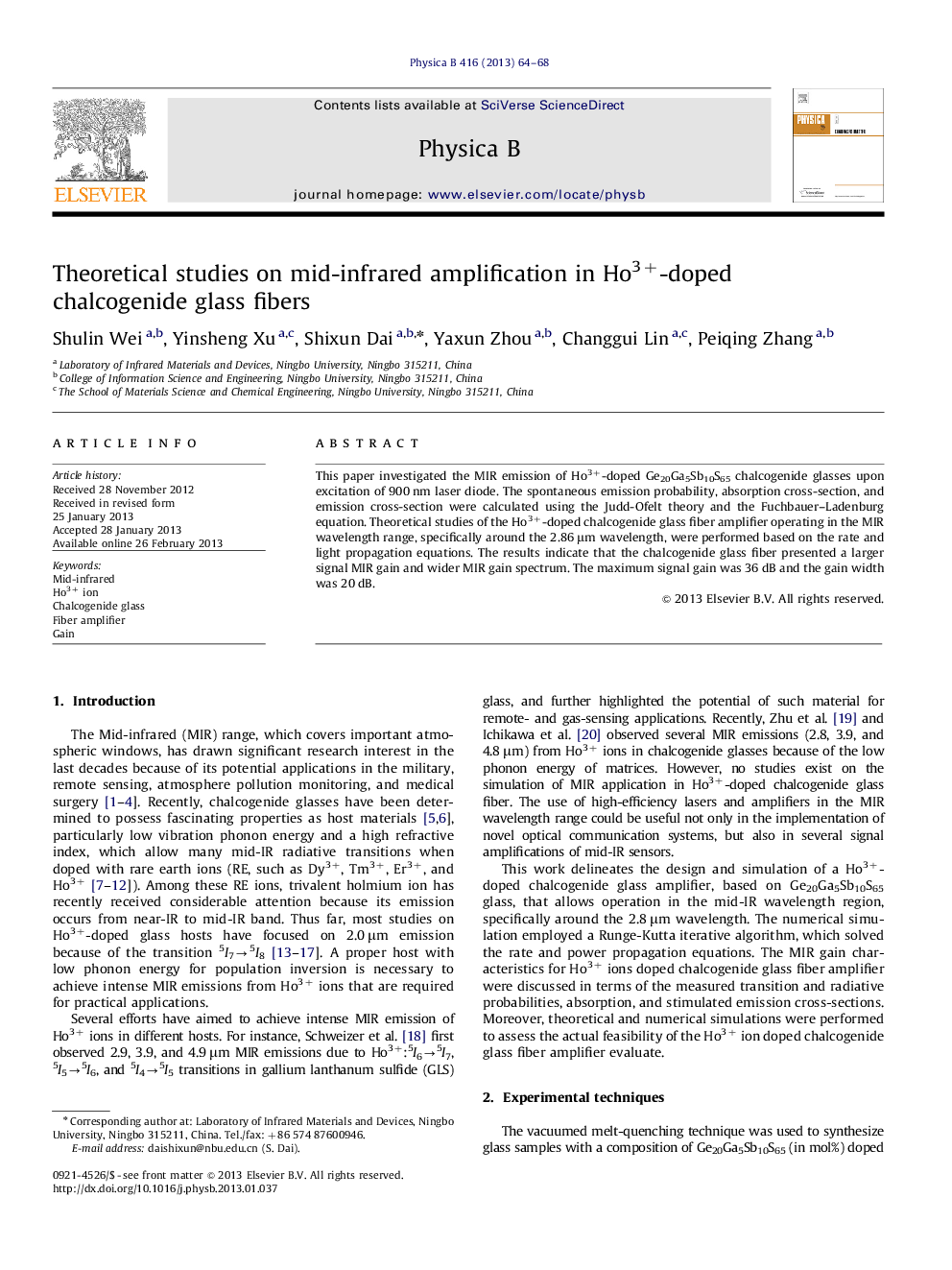| Article ID | Journal | Published Year | Pages | File Type |
|---|---|---|---|---|
| 1810098 | Physica B: Condensed Matter | 2013 | 5 Pages |
Abstract
This paper investigated the MIR emission of Ho3+-doped Ge20Ga5Sb10S65 chalcogenide glasses upon excitation of 900 nm laser diode. The spontaneous emission probability, absorption cross-section, and emission cross-section were calculated using the Judd-Ofelt theory and the Fuchbauer–Ladenburg equation. Theoretical studies of the Ho3+-doped chalcogenide glass fiber amplifier operating in the MIR wavelength range, specifically around the 2.86 μm wavelength, were performed based on the rate and light propagation equations. The results indicate that the chalcogenide glass fiber presented a larger signal MIR gain and wider MIR gain spectrum. The maximum signal gain was 36 dB and the gain width was 20 dB.
Related Topics
Physical Sciences and Engineering
Physics and Astronomy
Condensed Matter Physics
Authors
Shulin Wei, Yinsheng Xu, Shixun Dai, Yaxun Zhou, Changgui Lin, Peiqing Zhang,
